Learning features
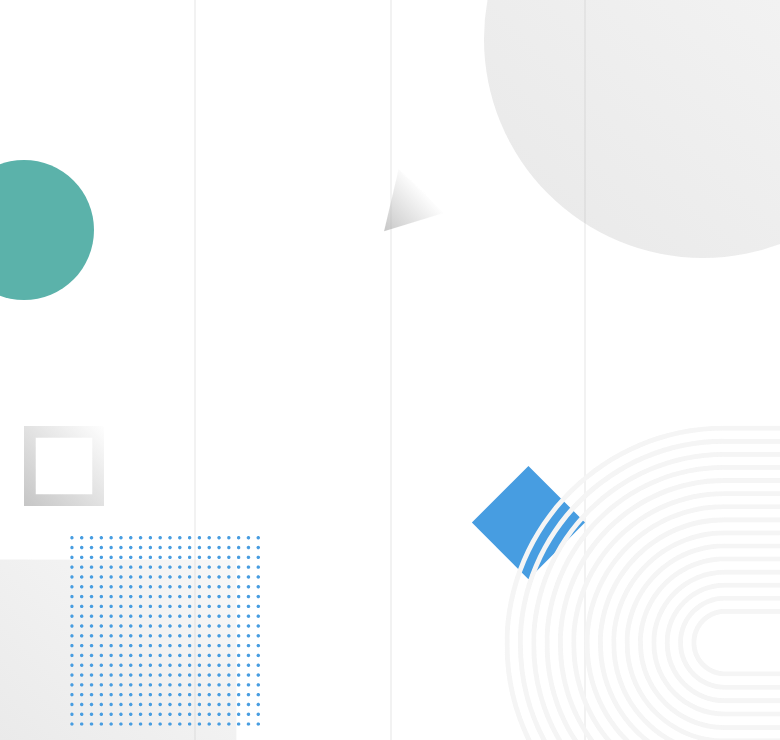
We cultivate five competencies through a "spiral of learning" of repeating academic input and practical output.
Eikei University of Hiroshima provides a new, unique form of education.
Can you imagine what the world and society will be like in the next ten or twenty years? You may experience significant changes in society, such as population decline, the progress of globalization, and the development of AI.
Eikei University of Hiroshima aims to foster a cadre of young people who have high aspirations to contribute to both their local communities and the world amid uncertain socioeconomic circumstances, as well as to boldly take on unsolved challenges, and to tenaciously pave the way for a new era. To that end, education at Eikei University of Hiroshima reiterates the cycle of academic input and practical output to develop five competencies.
Active Learning
All courses and classes use a class style that encourages student participation.
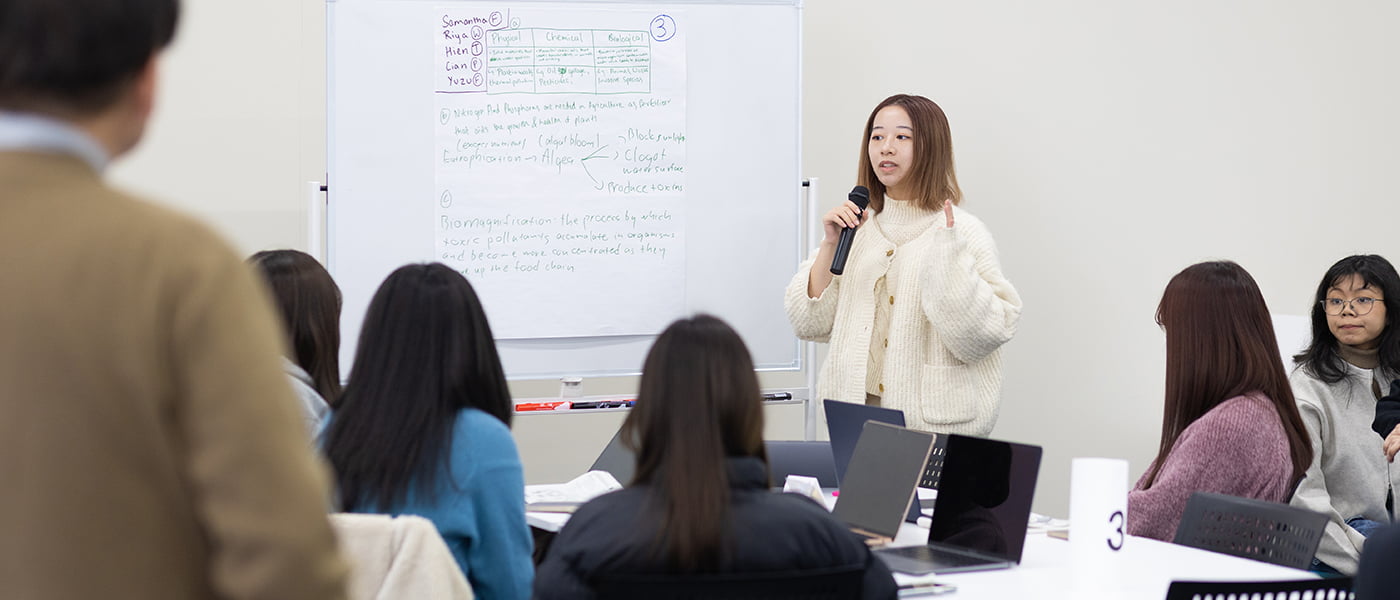
Eikei University of Hiroshima uses an “active learning” style of education that encourages student participation in all courses and classes in order to develop the five competencies. As class sizes are kept small at about 25 students, and the maximum portion of one-sided lectures by faculty members is limited to 20%, students are encouraged to take the initiative in learning.
-
Point 01
Small class sizes (25 students)
Eikei University of Hiroshima keeps class sizes small to make communication and learning effective for all students.
* Class sizes are about 16 students in the Intensive English Program.
-
Point 02
100-minute classes for proactive learning
To promote proactive learning, we set the maximum length of one-sided lectures by faculty members at 20% of class time so that the rest of the time can be used for other activities such as interactive activities, seminars, or experiences. We ensure ample time for dialogue between students, group discussions, and question-and-answer sessions.
-
Point 03
Classes span 2 consecutive class periods
Classes consist of back-to-back 100-minute periods, thereby reducing the number of courses taken in the same term and enhancing students’ concentration on each course.
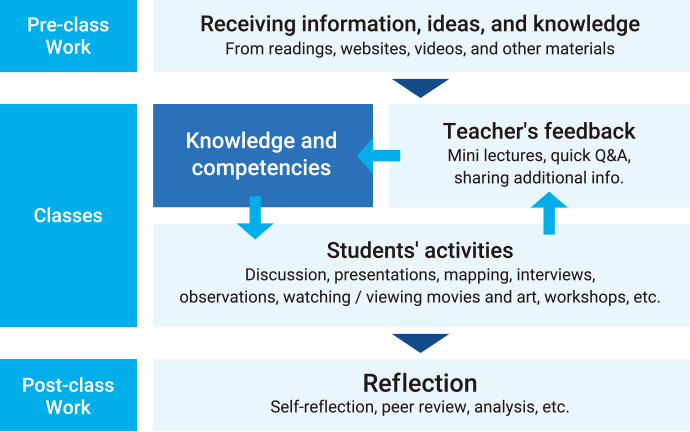
Practical English
Students experience an immersive English environment and acquire practical English proficiency.
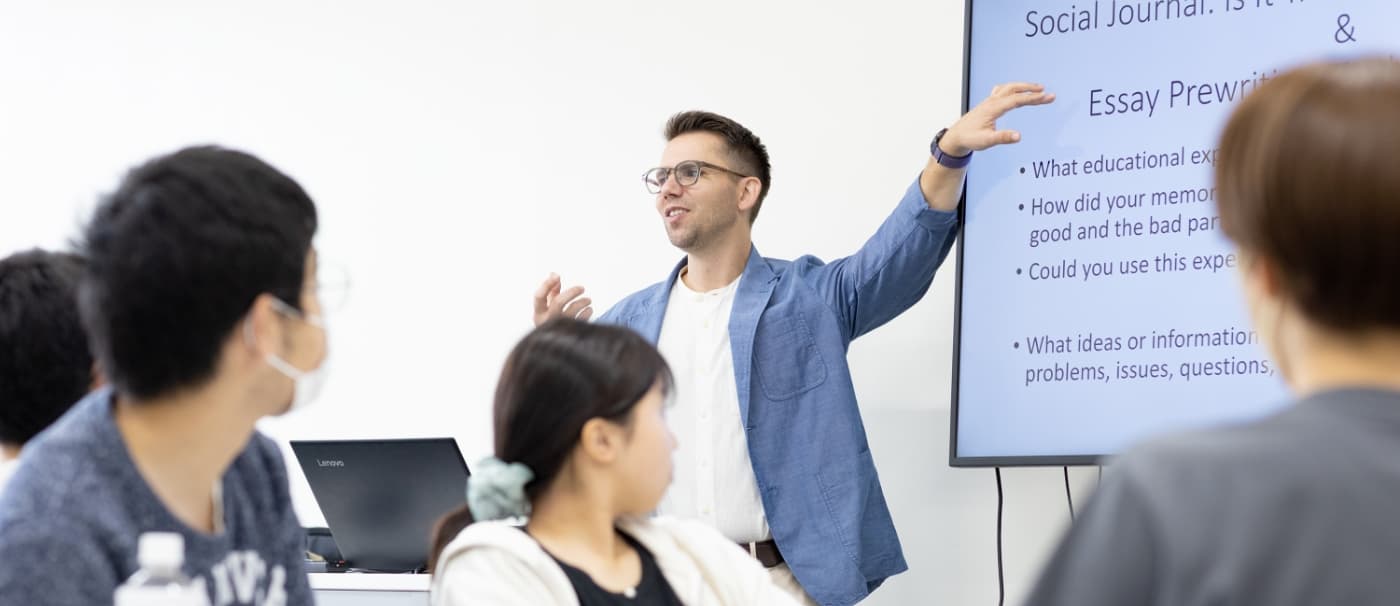
Students are supported in developing practical English proficiency for English-medium instruction coursework as well as meaningful communication with globally diverse peers. Students are immersed in a diverse learning environment to practice addressing global issues collaboratively.
-
Point 01
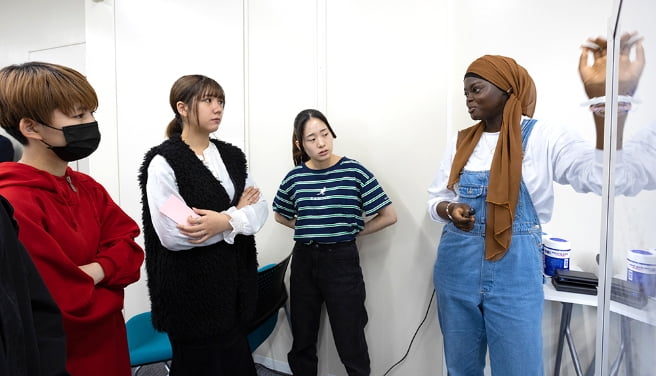
Half-year Intensive English Program
(For primarily Japanese speakers)The Intensive English Program is offered in the first and second quarters of the first year, in which students develop practical English proficiency for English-medium instruction coursework. Students are divided into small classes based on their level (basic, intermediate, advanced), practicing their listening, writing, reading, speaking, and presentation skills in an English-immersion environment.
-
Point 02
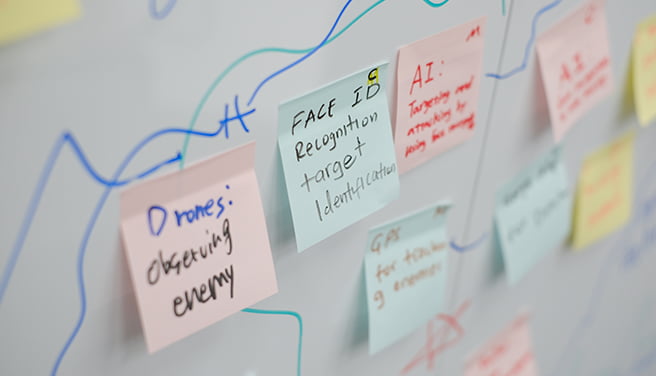
Bachelor’s degree offered in English (Fully bilingual curriculum)
At least half of the 124 credits required for graduation must be taken in English. With some exceptions (such as Japanese language courses for international students), the same courses are offered in both English and Japanese. This means that students can graduate by taking all their courses in English.
-
Point 03
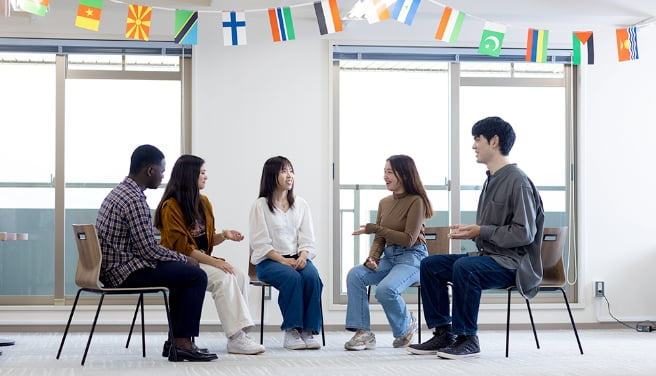
A quarter of our students come from abroad
With about 20 international students in each cohort year of 100 students, as well as students from overseas universities on exchange programs, we aim for a globalized campus where about 1 in 4 students are from outside Japan. Daily communication among students with diverse cultural backgrounds and values fosters a global mindset with respect for others.
Basic tools subjects
ICT / Data science, Thinking skills
Development of digital literacy and thinking skills
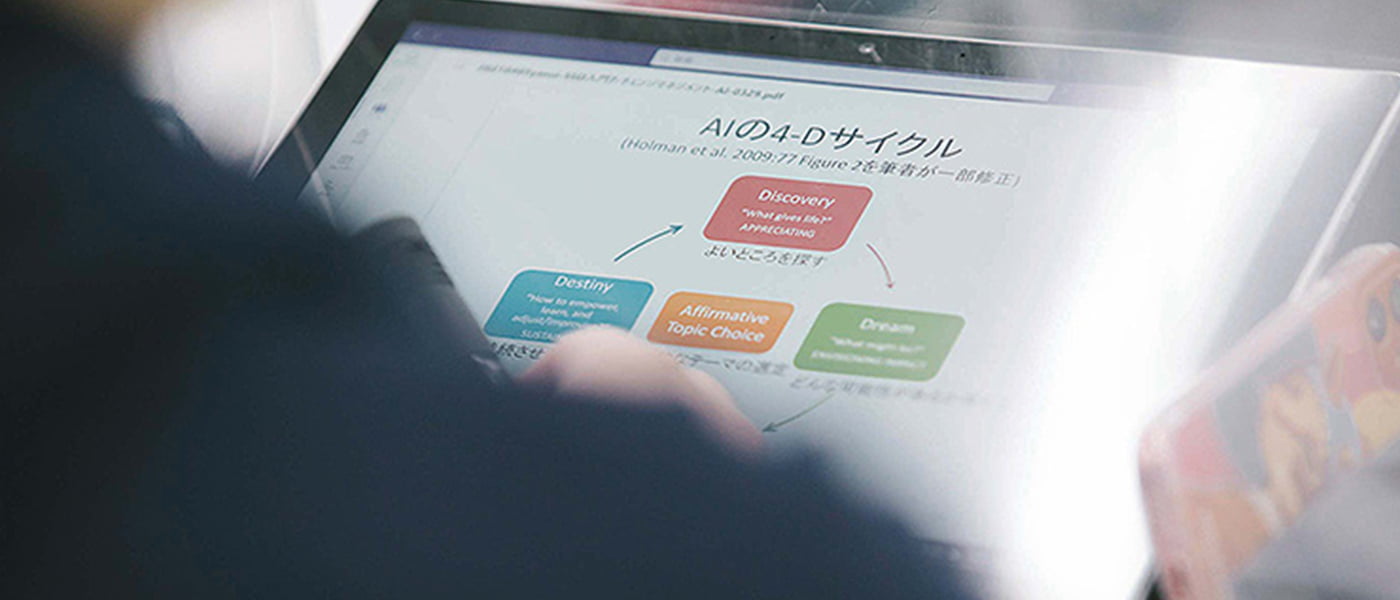
Students acquire essential skills for a future society in which IoT and AI are global trends by studying subjects such as ICT, data science, and a thinking-based curriculum.
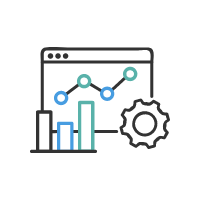 ICT / Data science
ICT / Data science
Students learn the basics of ICT and programming as well as how to utilize these as tools for solving problems and drafting projects (digital literacy). They also learn methods for collecting and analyzing data for decision-making, which will cultivate their strategic skills for developing integrated solutions for real-world problems. There are also opportunities provided to learn about information logic, an important tool for utilizing ICT.
[Example]
Techniques for creating websites and apps, skills to effectively apply analysis results, problem-solving skills in the real world with IoT, AI, and data science, and more
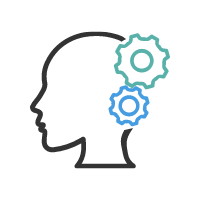 Thinking skills
Thinking skills
Students cultivate logical thinking, a basic thinking skill necessary for problem-solving. They also gain skills necessary in the problem-solving process in the real world, such as methods for carrying out projects and ways to promote debate and form a consensus in collaboration with others, thus nurturing their strategic skills for developing integrated solutions for real-world problems.
[Example]
Logical thinking, design thinking / System thinking, project management, facilitation, and more
Liberal arts subjects
Gain a well-rounded education to navigate global society
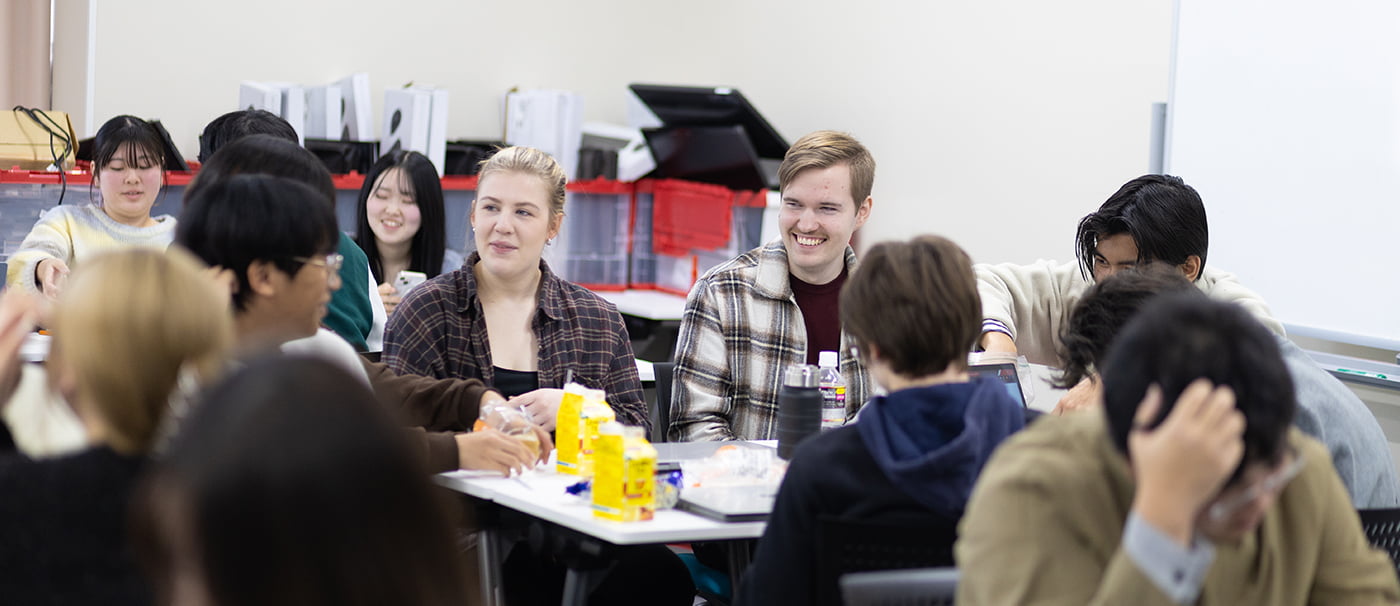
At EUH, students study broadly in liberal arts courses to understand contemporary issues in society at home and abroad, including the UN SDGs*. The 17 goals of the SDGs are established around the 5 Ps (Peace, Partnership, People, Prosperity, and Planet), as classified by the United Nations. Students select a “window” from which to view issues according to their interests and learn knowledge useful to the theme of each window.
Major areas of study include the humanities and social sciences (e.g., arts, literature, philosophy, ethics, psychology, and cultural anthropology), economics (e.g., management), and the sciences (e.g., environmental science).
*SDGs are the international goals for sustainable development adopted by the UN General Assembly in 2015.
Project-Based Learning (PBL)
Take on real-life challenges faced by our partner corporations, municipalities, NPOs, and international agencies
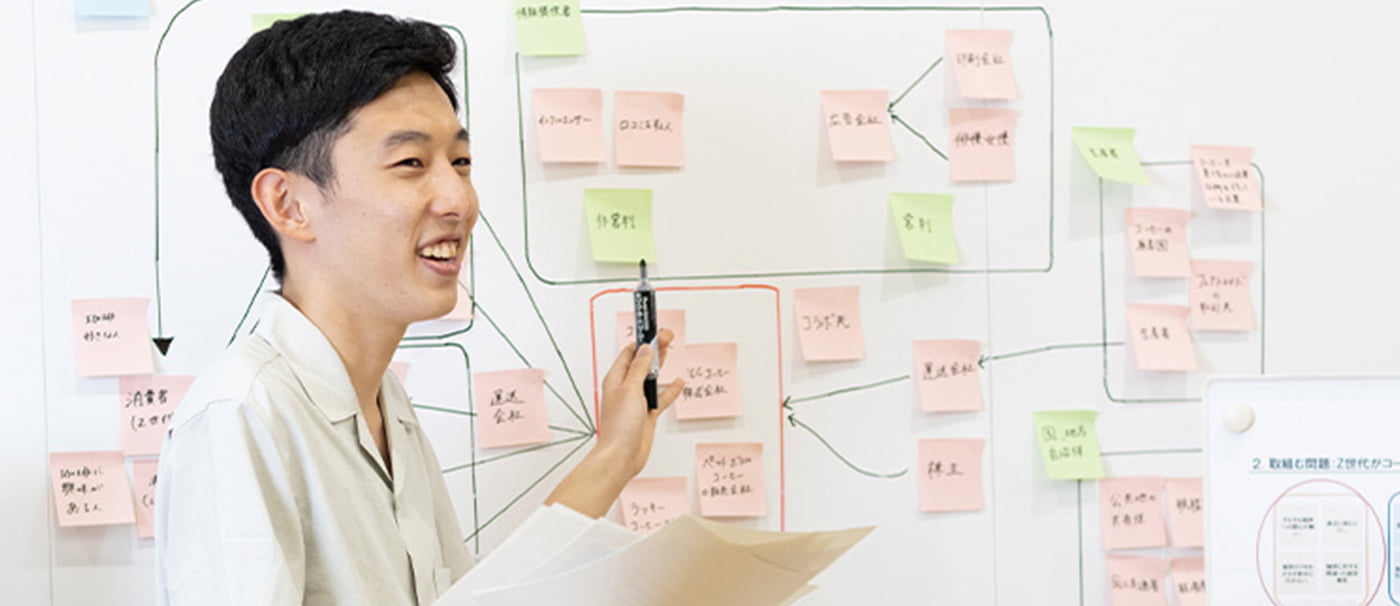
"PBL" refers to exercises where students take on real-life challenges, identifying causes related to a specific issue and proposing solutions. Issues faced by corporations, municipalities, NPOs, and international agencies are selected as themes, allowing students to learn practical solutions to issues.
Flow of Project-Based Learning (PBL)
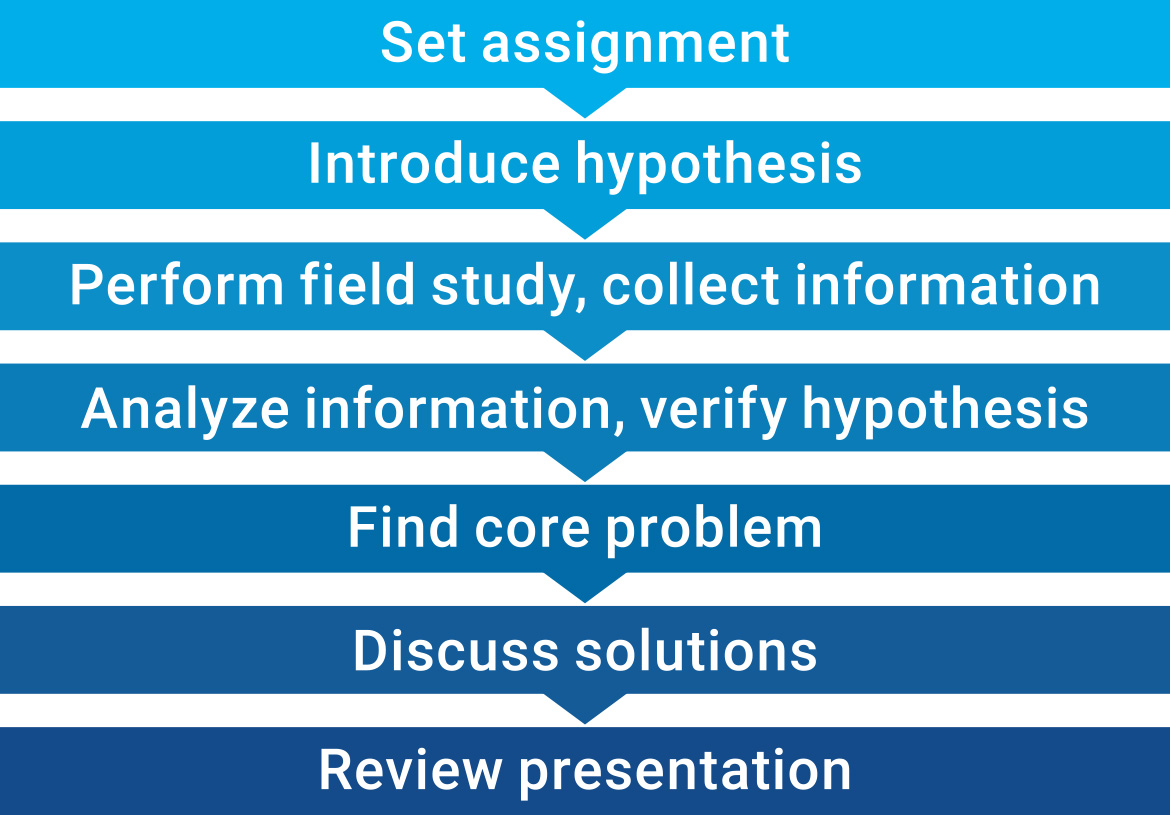
Examples of Project-Based Learning (PBL)
What activities can vitalize global manufacturing?
"Choco-chip Sanmaioroshi" is a team of students that planned the "Industry, Academia, and Private Sector Co-creation PBL Workshop" (tentative title), a project aimed at spreading awareness about the potential held by manufacturing companies to vitalize the manufacturing field. They set their theme around the question, "What activities can vitalize global manufacturing?" What kinds of answers did they find through verification?
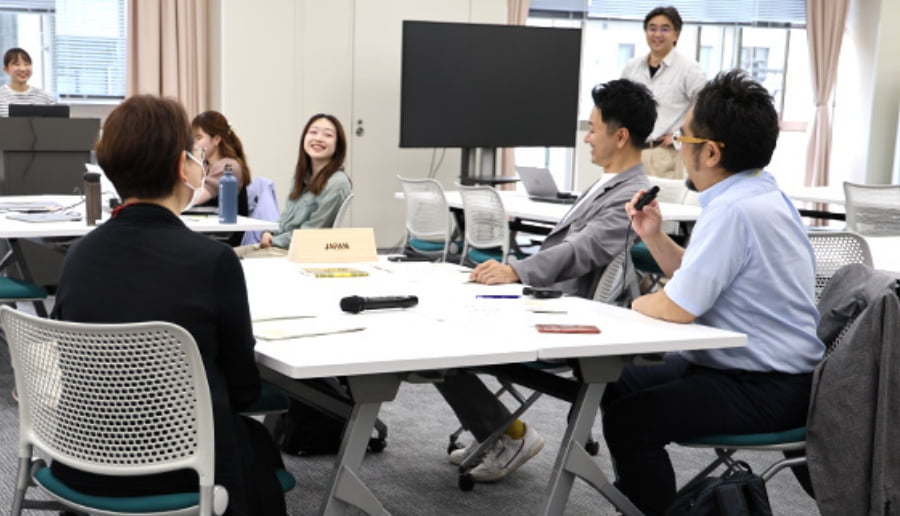
Experiential / practical programs
Students take part in a variety of volunteer and internship programs both in Japan and overseas to broaden their horizons.
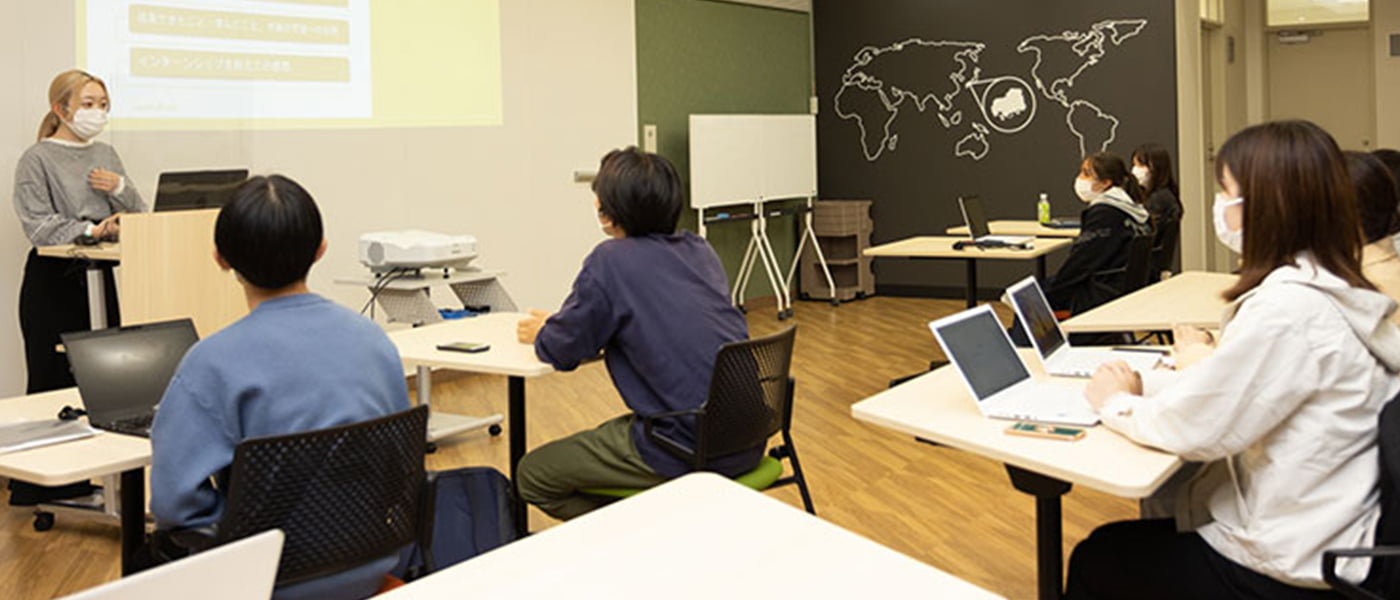
Students engage in internships and volunteer activities in Japan and overseas in cooperation with companies and international organizations participating in the Eikei University of Hiroshima Council of Practical Learning.
Students must participate in overseas activities at least once while enrolled here, taking 4 credits (2 courses) or more. Under the guidance of the instructor in charge, the curriculum incorporates pre- and post-program studies to enrich program activities and deepen learning.
Standard learning flow

Activity
-
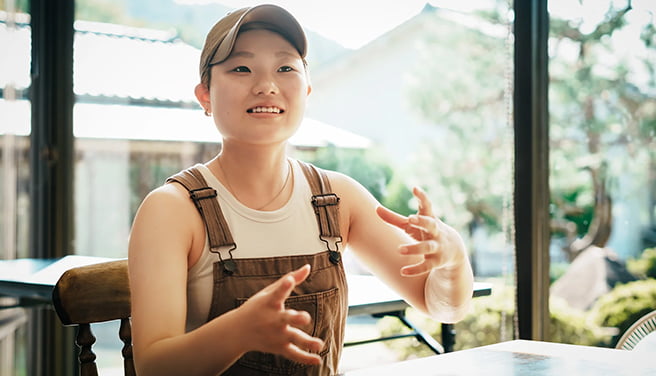
Domestic Internship Program A
In their second or third year, students are expected to take an active interest in society and deepen their understanding of their work by taking part in the day-to-day operations of private companies, municipal and prefectural administrative agencies in Hiroshima Prefecture, or international organizations.
-
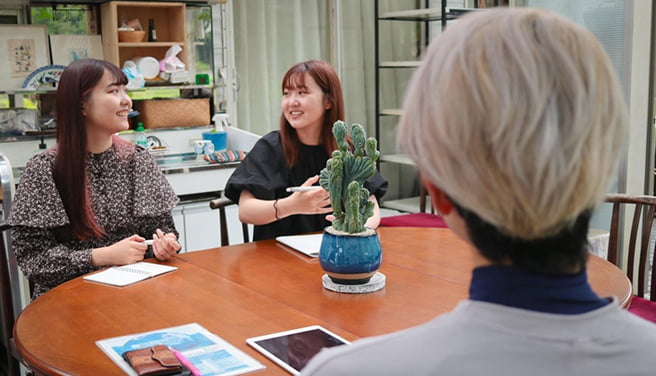
Domestic Internship Program B
This program is designed for students to pass the torch to the next students joining the same program. Students inherit and develop the work methods and achievements of their predecessors and then teach their work to their successors. In this way, students gain a greater sense of responsibility and understanding of the job, and new learning and insights are generated with each iteration.
-
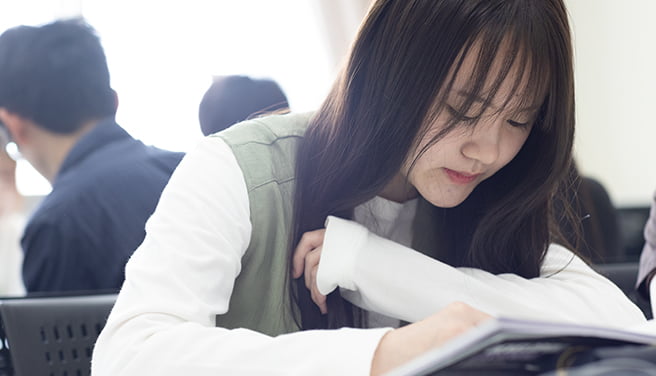
Domestic Volunteer Program
In their second or third year, with the help of organizations that support the activities of non-profit organizations in the prefecture, students will gain experience with voluntary social contributions by getting involved in activities such as community development, disaster support, education, and interacting with foreign tourists.
Overseas Programs
-
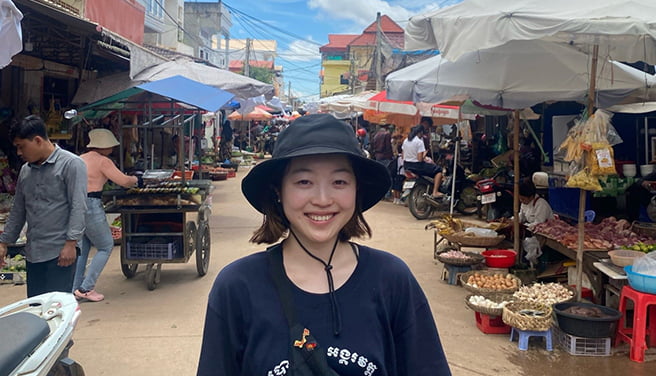
Internship Abroad Program
In their second or third year, with the cooperation of a private organization that offers internships abroad, students gain practical business experiences at companies and other organizations, which leads to stimulating their interest in other cultures and improving their negotiation and collaboration skills.
-
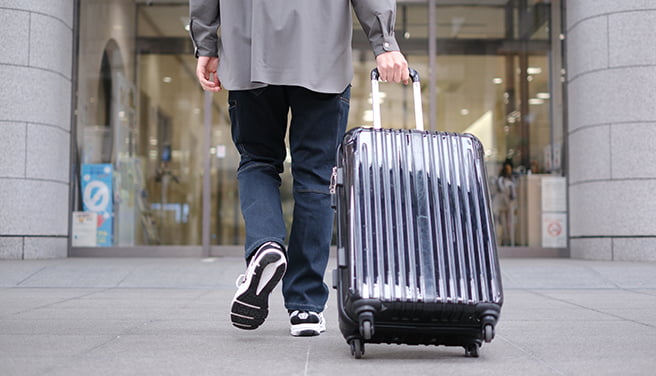
Volunteer Abroad Program
In their second or third year, with the help of an organization that offers volunteer activities overseas (mainly in NGOs operating in developing countries), students gain experience with different social backgrounds. Students contribute to local support activities while actively stimulating their interest in different cultures and deepening their understanding of diversity.
-
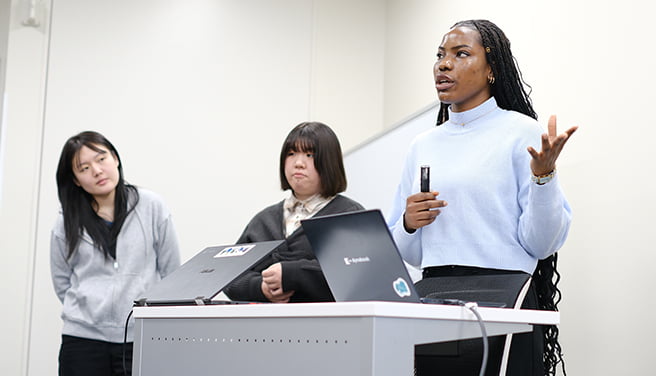
Short-Term Study Abroad Program
In their second or third year, students can choose to participate in a summer school program or short-term study abroad program offered by universities affiliated with partner institutions or those affiliated with Eikei University of Hiroshima.
Study abroad
A diverse range of study abroad programs enable students to better themselves by learning in a new environment.
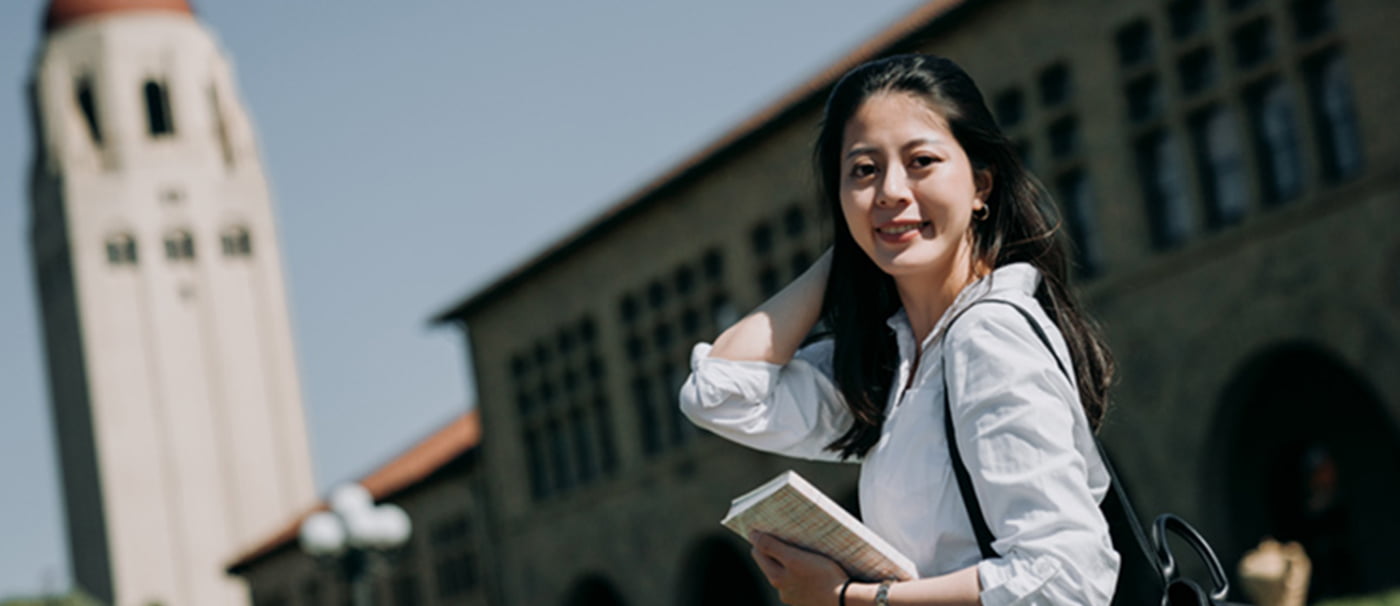
To achieve the “spiral of learning” overseas, Eikei University of Hiroshima provides a variety of study abroad programs. *A scholarship of 50,000 JPY/month is granted to students participating in the Student Exchange Program.
Student exchange programs at partner universities
We have made international exchange partnerships with 34 universities in 22 countries and regions around the world. We will continue to add more exchange partnerships.
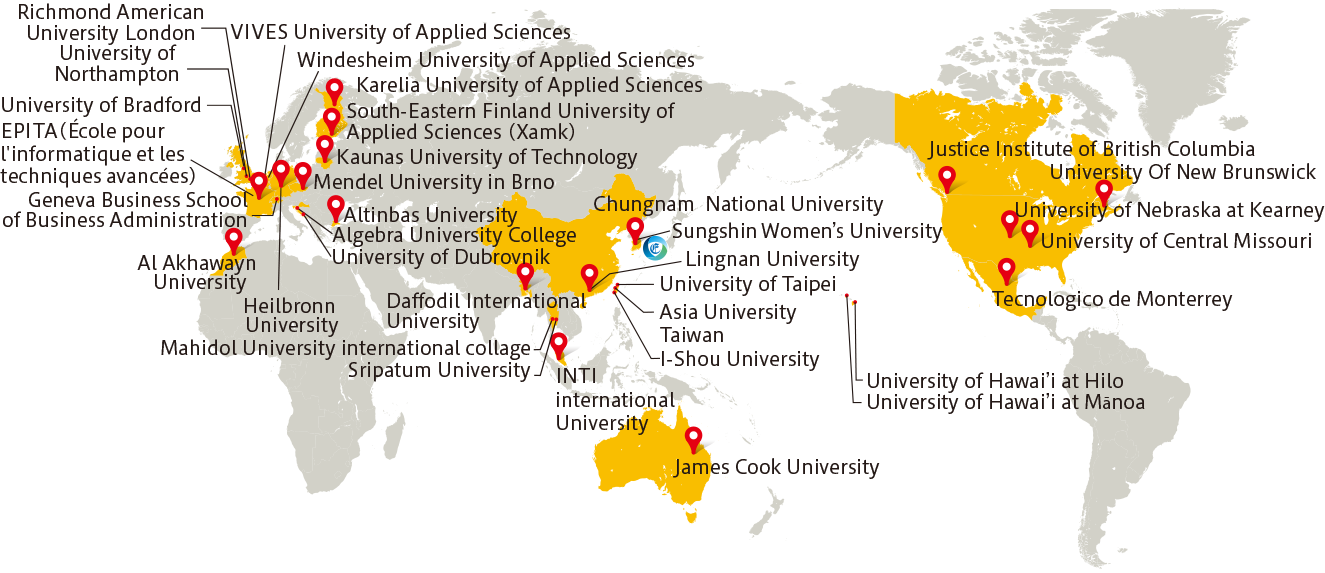
Student Experiences
- HARADA Miu, student exchange program
(Chungnam National University, South Korea)
At Chungnam National University, each exchange student is assigned a "buddy," that is, a local student who kindly offers support not only in terms of studies but also in various areas of daily life.
My buddy helped me move into the dorm, gave me a tour of the campus, helped me register for classes, and also attended the orientation for exchange students together with me. They also offered various other kinds of support, such as when registering as a foreign resident or applying for a bank account. Before entering South Korea, I felt almost crushed by anxiety, but having a buddy really helped me mentally and emotionally.
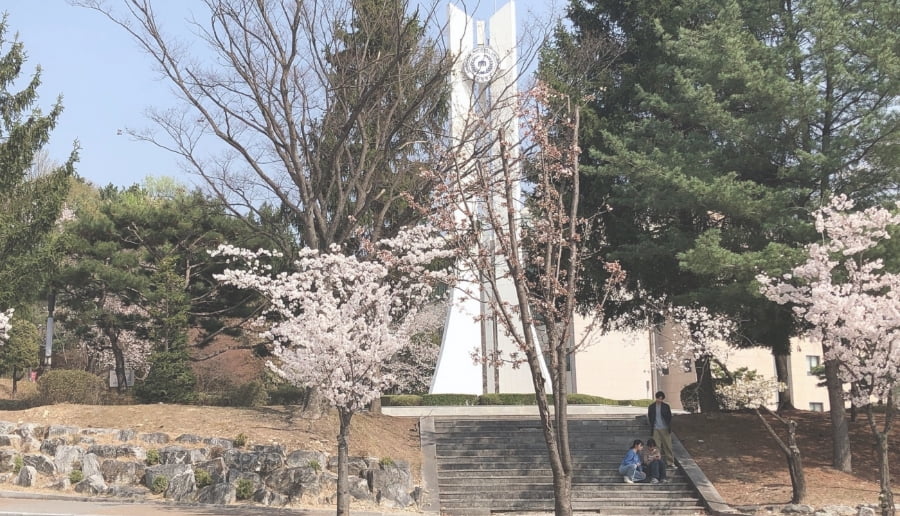
Degree Project
This is the culmination of the "spiral of learning" at Eikei University of Hiroshima.
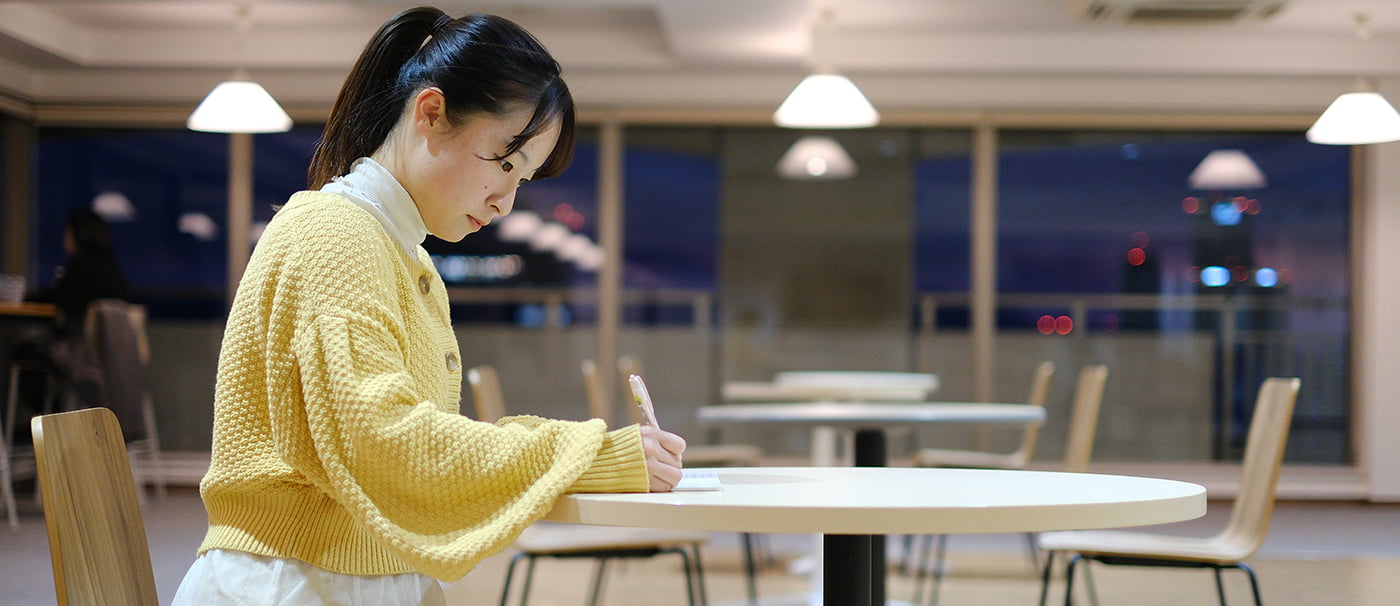
Students complete a year-long degree project in their third or fourth year. Students select their own project themes, clarify issues, and investigate potential solutions.
Research for individual degree projects is performed through seminars with faculty advisors. We invite stakeholders of our partner corporations, municipalities, NPOs, international agencies, or others to two briefing sessions (mid-term and final) as external evaluators, getting actionable feedback on research in progress from perspectives such as novelty and feasibility. Students then incorporate this feedback into a final report and publicly present their results.
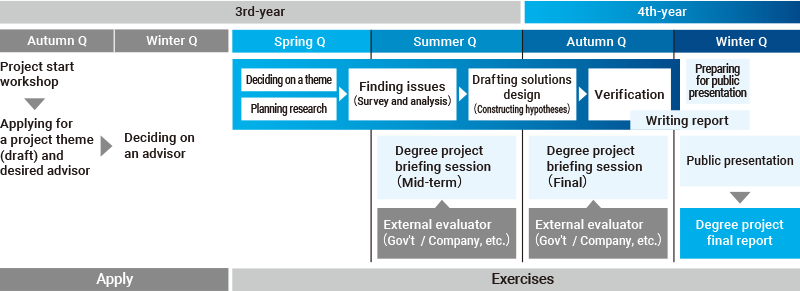
See even more content.
-
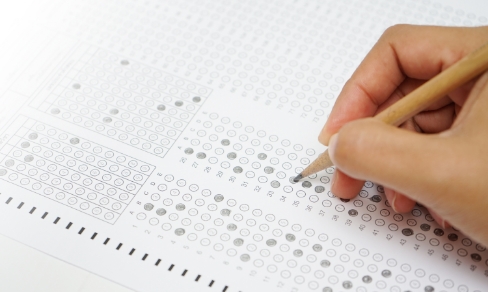
Admission Systems
Click here for information related to entrance examinations, including application guidelines, details of each entrance examination system, and examination schedules.
-
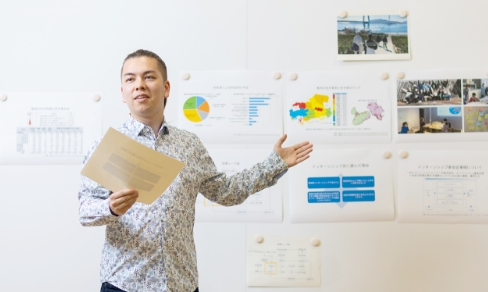
Features of Learning
Through mastery x practice, we nurture the ability to design the future and society. Here are some of the features of learning at Eikei University.
-
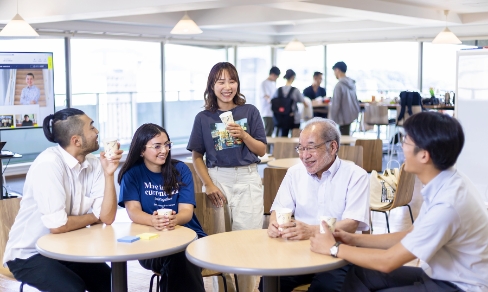
Life at Eikei
The entire city of Hiroshima is a place of learning.
Campus Life with the Urban Campus. -
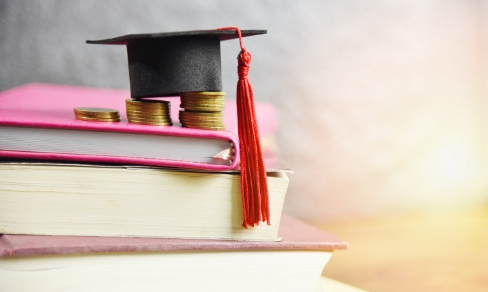
Tuition and Scholarships
We have various tuition support and scholarship programs available to reduce the burden of tuition.

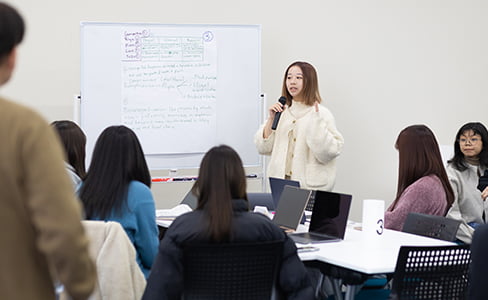
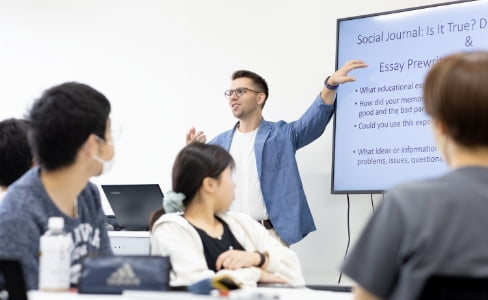
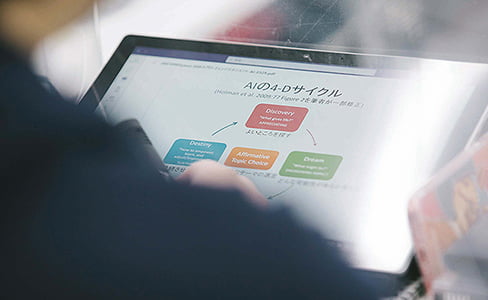
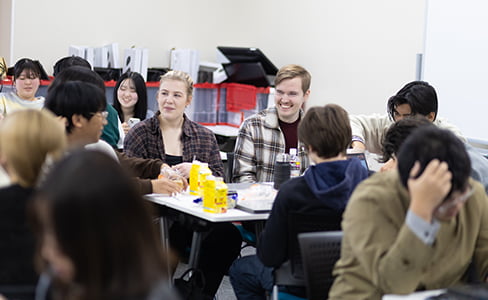
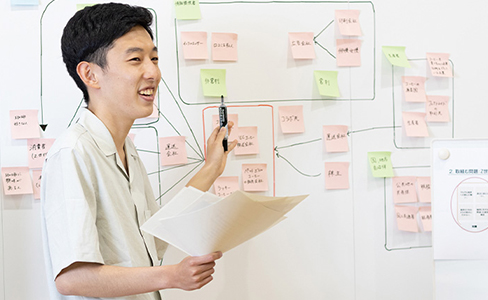
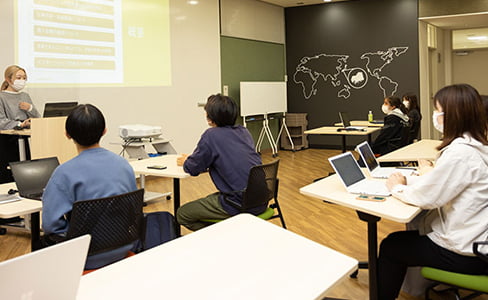
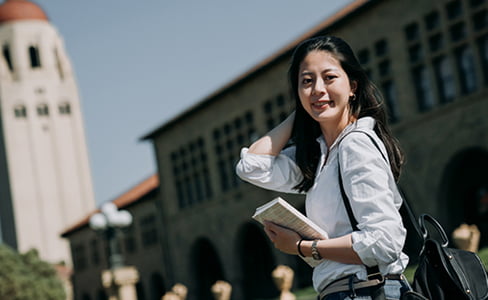
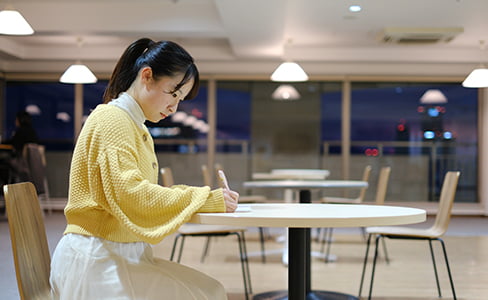
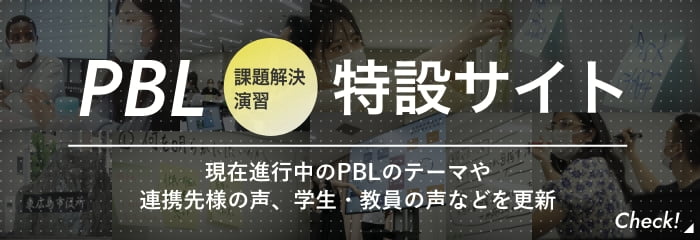
Manufacturing Radio Team
(Hiraoka Industry Co., Ltd., Yamadaya Co., Ltd., Koyudo Co., Ltd., Maruni Wood Industry Inc., Hiroshima FM Broadcasting Co., Ltd.)
We were surprised by just how ambitious and capable the students were about solving problems. As fewer and fewer young people aim for careers in the manufacturing industry, we were very interested in how the students, who are about to enter the workforce, would understand the manufacturing industry and find solutions. We held the "Industry, Academia, and Private Sector Workshop," as proposed in the final briefing session, in October. This was the first joint event of its kind for both the Manufacturing Radio Team and for EUH, and we are satisfied with the results. We hope to continue holding joint activities.